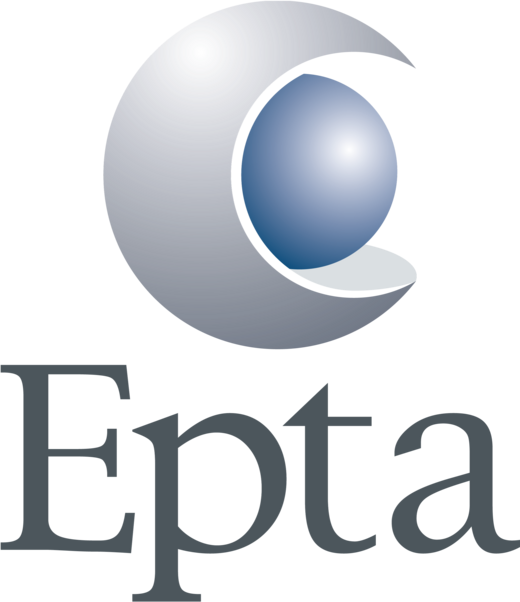Best practice examples
Results 111 to 120 of 148
Best practice Prototype and Test
When you have a new idea or want to improve system performance, first use simulation to evaluate if the idea will work. When design results are promising, take the concept to the lab for initial prototyping and testing. Such work can help inform proper component selection, controls settings, and system integration considerations. …

Best practice Proyecto Coca Cola Stratum Liberia, Costa Rica.
This project is one of the most modern, technological and automated plants of Coca Cola in the world. It is a project of approximately $ 100,000,000.00 and 43,132 square meters of construction that has the LEED Silver certification. What was our work on this project? It consisted of starting up the complete refrigeration system of the plant, which included all the air conditioning, the cooling of the process water and the cooling of the refrigerated storage chambers and the freezing chamber. One of the most important conditions was to do an energy efficient and environmentally friendly project, and although the project was originally designed with ammonia, the required power and the volume of refrigerant in the system raised doubts about the application of this natural refrigerant. In term of refrigeration level, the plant required 750 TR in plant air conditioning and 150.0 TR in cold water systems for process and 208.0 TR in refrigerated and frozen storage systems. Originally the project was designed by other professionals, and the question at that time was not exactly the refrigerant, the question was oriented towards the ammonia volume of the system. The original design considered approximately 8 thousand pounds of ammonia. Our job then consisted of redesigning the project, it was then that we changed from a recirculated ammonia system to a direct expansion system for low temperature charging, where we used evaporators with a maximum ammonia volume of 2 pounds per equipment and, we maintained the water and propylene glycol cooling system with a flooded ammonia system; which in one way or another is also a low volume system. Our contribution was in addition to that, to increase the efficiency of the system, we increased the evaporation temperatures, we decreased the installed power and this represented an approximate energy saving of $250,000.00 per year and it was also possible to minimize the amount of equipment in the machine room. From an original design of 8 compressors we redesigned to 6 screw compressors of the same model and that came to give safety and an additional benefit for the maintenance . Entering the engine room we find 6 screw compressors, in this case they are Frick, they are 6 identical compressors in terms of model and power. We are going to find three plate heat exchangers, one for process water cooling, one for air conditioning water and another for propylene glycol cooling with which we air-condition the refrigerated storage chambers, named Water house and cool Flamable. We also found an ammonia dehydrator, which was incorporated to remove any moisture or water and thus maintain the efficiency of the system. In addition, we find that automation system, which one we not only control, we also monitor the entire refrigeration system of the machine room. Security and leak detection systems that comply with IIAR standards were incorporated into the system. It is basically an engine room where the entire volume of ammonia is concentrated, we are talking about 2800 pounds, 5000 pounds less than the original design. It is important to mention that the new design considered the use of heat of the oil compressor for heating the storage frozen floor and thus taking advantage of residual energy, a radiant floor was built. The main achievements of the project in terms of the redesign of the refrigeration system were the following: • The installed power of the cooling system was reduced by 472.5 Hp (352.49 KW). • The efficiency of the system was increased by 13.26%. • The ammonia volume was decreased by 4,822.00 pounds (2,187.24 Kg). • Ammonia, a natural refrigerant with a GWP of zero, was maintained. • The heat of the compressor oil was used in the requirements of the same system. • Equipment was standardized so that six compressors were installed identical in model and power. • A system was redesigned under the IIAR standards, the INTECO standards in Costa Rica, the Montreal Agreement and the Carbon Neutrality Country Program. • Savings were achieved in the initial investment. …
Best practice R&D on refrigeration and heat pump systems applying natural working fluids
Education of next generation of engineers within refrigeration processes including thermal energy storage technologies. …
Best practice Recovery
-Recovering of traditional and transitional refrigerants -use of proper equipment for recovery -proper storage of recovered refrigerants - …
Best practice Revision of the energy efficiency program for room Acs
iCS and a network of NGOs provided technical support to INMETRO for the revision of the Brazilian Labeling program for room ACs. This network also actively worked to pressure INMETRO to adopt a more ambitious energy efficiency levels. The process resulted in the Ordinance 269/2021. …
Best practice SABROE SABlight air-cooled chiller
Johnson Control’s SABROE SABlight air-cooled chiller uses propane as a refrigerant, providing an environmentally friendly and economic alternative to air-cooled chillers using synthetic refrigerants. Six standard models for use in the low capacity market exist. When comparing efficiencies, the SABlight exceeds hydrofluorocarbon chillers. The frequency-controlled standard compressor ensures a very high coefficient of performance (COP). Moreover, the wide control range makes it a highly flexible chiller that will operate efficiently even at low loads. The SABROE SABlight air-cooled chiller is tailored for outdoor installation with a very low-noise operation. The particularly compact design uses V-coil condensers to significantly reduce the total carbon footprint. With a height of only 2.9 m and a width of only 1.3 m, SABlight units are extremely manageable. …
Best practice Safety
Use of appropriate equipment and PPEs when handling natural (HCs) refrigerants. …
Best practice Saving 26.5% energy on HVAC Chiller system at the French Embassy in Thailand
The Embassy of France in Bangkok participated in the 2018 France Ministry of Europe and Foreign Affairs’ Green Embassy contest with its project to reduce energy consumption related to air conditioning. Installing CONTINEWM® Nets have contributed to save 26.5% of electricity consumption of the airconditioning (Chiller system) of the entire building and succeeded to place the project in the TOP 5 in the Green Embassy worldwide contest. The project consists in equipping the Air Conditioning system with the innovative CONTINEWM® Japanese technology from the French-Thai company Technic Electrical Engineering (Thailand) Co., Ltd. The reduction of the electricity consumption is equivalent to a validated reduction of 80 tons per year of CO2 emissions. The performance measurement was made by comparing the electricity consumption of chillers of the administrative building of the French Embassy WITHOUT and WITH CONTINEWM® Net under strictly same conditions and environment over a 3-month period under the control and validation of the Deputy Director of Buildings and Logistics, Deputy Director of Central Services and Logistics of the Ministry of Europe, Foreign Affairs and Development. These FIR emitting ceramic Nets optimize air conditioners and reduce energy consumption while improving the quality of the air by ionization. …
Best practice Sectoral mitigation strategy – Transport refrigeration in South Africa
HEAT regularly applies a sectoral approach when striving to reduce emissions. Greenhouse gas (GHG) emissions inventories, low-carbon roadmaps and real-life pilot projects can effectively support sector transformation and low-carbon strategies. Aiming at the reduction of emissions from refrigerated transport in South Africa, HEAT supported the GIZ project Mitigating Emissions in the Transport Refrigeration Sector in South Africa in 2013-2017, funded by the Federal Ministry of the Environment, Nature Conservation and Nuclear Safety (BMU). HEAT identified measures to reduce emissions from refrigerated transport in trucks. The switch to natural refrigerant-based cooling systems and increased efficiency of those systems led to less direct emissions from the refrigerants and less indirect emissions from diesel to operate the equipment. Together with Transfrig, the leading local manufacturer, our experts developed and tested prototypes of climate-friendly refrigeration systems with 30% less energy consumption. Contribution to climate resilience: An improved cold chain leads to better food security and less health risks associated with perishable food. Optimized logistics and more efficient refrigeration systems cause less air pollution than conventional systems. Working with local companies regarding innovative technologies enhances vocational training, job opportunities and supports local operators and technology providers in their efforts to “green” their business. Moreover, the sector strategy introduced Measuring, Reporting and Verification (MRV) system procedures that can also be applied in other sectors. …

Best practice Self contained (plug-in) refrigerators and freezers using refrigerant R290 propane
Full range of products for commercial refrigeration, display cases and monoblock units for cold rooms …
